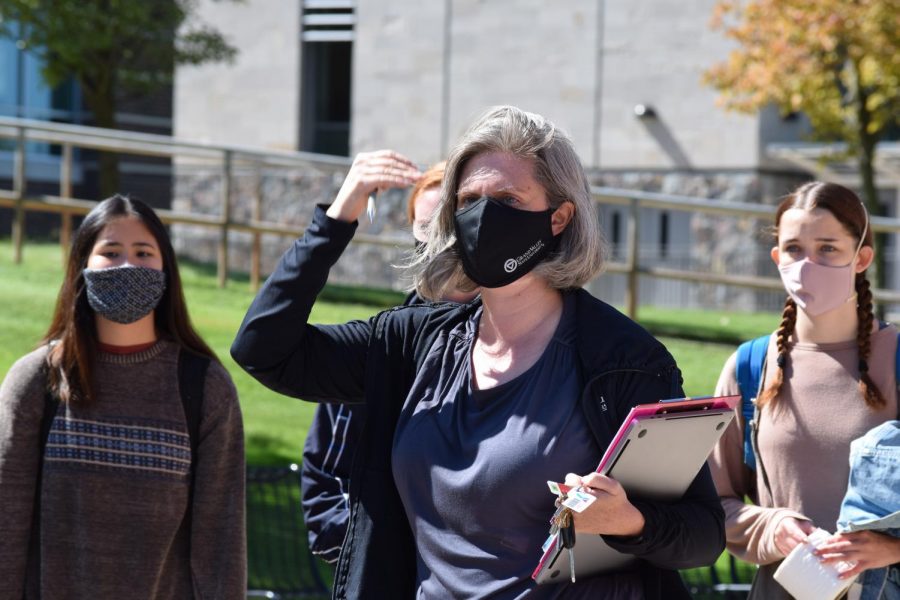GV dance program adapts to changes, challenges
Sep 21, 2020
The COVID-19 pandemic has brought a lot of changes to the Grand Valley State University dance program. From smaller classroom sizes, to virtual performances, to lack of partner work, students in the program have had to redefine what it means to be a dancer.
Dance instructors and professors in the program worked together to alter the program to fit social distancing guidelines. Classes that were relatively easy to put online, such as dance history courses, were put online.
“Our technique classes and rehearsal classes were the bigger challenges,” said Dance Curriculum Coordinator and Assistant Professor of Dance Carrie Brueck Morris.
Morris explained that those classes are being taught in a hyflex model, with some students socially distanced in the dance studios and others simultaneously on Zoom. In the large dance studio, there are two different cameras set up, a monitor, projection and microphones for instructors and musicians. For rehearsal courses, the classes are currently outside a lot where they can have more people than can typically fit in the large studio, and they’re also doing some things online.
Matthew Gabel, a senior in the dance program, said that being a dancer during the pandemic has been difficult, but that dancers are “extremely used to adapting to situations so we’re making the best of it.”
Another senior in the dance program, Emily McKenzie, said that something she really values is being able to dance with others and share a space with other artists, which is something she can’t do to the extent she is used to.
“The pandemic has kind of pushed the dance world to expand our creativity even further and explore different realms and mediums that dance can exist in,” Mckenzie said. “It’s been challenging, yet inspiring.”
Both Gabel and McKenzie said that a sense of community is a big part of being in the dance program, and not having that in the way they used to, has taken some adjusting.
“Usually, we are with each other constantly,” McKenzie said. “We get to the studio early in the morning, eat lunch together in the locker rooms, then meet back up again for evening rehearsal. The dance program is such a tight-knit group because we spend so much of our time together and I have met my very best friends through it.”
Morris said that being a dance instructor during quarantine was difficult. It was hard to watch the students go through, what in a lot of cases amounted to, grief, she said.
“Teaching changed for me from being more about the physical body and to being more about emotional and mental health,” Morris said. “Those are related, so I tried to focus classes in a different direction. How could we be creative? How could we get something out of this time instead of just focusing on what was a tremendous loss, while also acknowledging and working through the pain of that loss? How could we use movement and the body to help work through that?”
Continuing to dance during the pandemic has been very important to dancers like Gabel and McKenzie.
“Art can be comforting, encouraging and make people feel less alone,” McKenzie said. “In a time where socialization is limited, mental wellness may be suffering, and overall uneasiness exists in many people’s lives, art is a healthy and healing escape. It can connect us all no matter the distance or circumstance.”
























